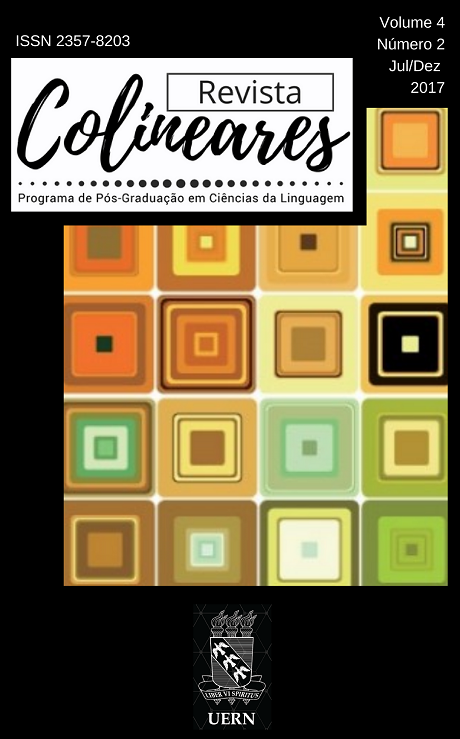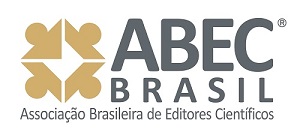VOWEL EPENTHESIS EMERGENCE IN CODA POSITION BY BRAZILIAN LEARNERS OF ENGLISH
Keywords:
Phonetics, Epenthesis, English as a foreign languageAbstract
The aim of this study is to analyze the occurrence of vowel epenthesis on unvoiced stops and fricatives in coda position on the speech of Potiguar learners of English as a foreign language (EFL). The research question asks: considering p, t, k, s, and f in final coda positions, which are the main factors associated to epenthesis emergence by Potiguar EFL learners? The hypothesis states that proficiency level, coda type, writing patterns and phonotactic context influence significantly epenthesis emergence by Potiguar EFL learners. An experiment was carried out consisting on the reading of 15 words ending with unvoiced occlusives or fricatives in coda (p t k f s). As a result, the variable proficiency level is an influencing factor for the occurrence of epenthesis, once beginners allowed more instances of the phenomenon. In relation to the type of final coda, it was not possible to claim which consonant is the highest influence for occurrence of epenthesis. There was no significant difference between the occurrence of epenthesis on words ending with consonants and the vowel e. Finally, the variable phonotactic context was also non-significant, as there is no influence of the phonotactic contexts (CVC, CVVC or CVCC) on epenthesis emergence.
Downloads
References
CAMARA JR, Joaquim Mattoso. (2000). Estrutura da língua portuguesa. Petrópolis: Vozes.
COLLISCHONN, Gisela. (2003). Epêntese vocálica no português do sul do Brasil: variáveis extralinguísticas. Revista Letras, Curitiba, n. 61, especial, p. 285-297.
______. (2004). Epêntese vocálica e restrições de acento no português do sul do Brasil. SIGNUM: Estud. Ling., Londrina, n. 7/1, p. 61-78.
GUTIERRES, A.; GUZZO, Natália. (2013). A produção variável de epêntese em coda final por aprendizes de inglês como L2. In: Anais do V Seminário Nacional sobre Linguagem e Ensino. Pelotas: 2013, p. 1-14.
LIMA, L. A. S.; LUCENA, Rubens M. (2013) Análise variacionista da epêntese vocálica medial na aquisição de inglês como L2. Cadernos de Letras, v. 47, p. 145- 161.
LUCENA, Rubens M.; ALVES, U. K. (2010). Implicações dialetais na aquisição de obstruentes em coda por aprendizes de inglês (L2): Uma Análise Variacionista. Letras de Hoje, v. 45, p.35-42.
LUCENA, Rubens M. (2012). Aquisição fonológica da coda silábica por falantes brasileiros de inglês: análise a partir de padrões variáveis do português brasileiro. In: Anais da XXIV Jornada Nacional do Grupo de Estudos Linguísticos do Nordeste. Natal: EDUFRN. v. 1. p. 1-9.
LOWRY, Richard. (2017). VassarStats. Disponível em: <http://vassarstats.net/>. Acesso em: 15 jan. 2018.
NASCIMENTO, Katiene Rozy Santos do. (2016). Emergência de padrões silábicos no português brasileiro e seus reflexos no inglês língua estrangeira. 2016. 187 f. Tese (Doutorado) - Curso de Doutorado em Linguística Aplicada, Universidade Estadual do Ceará, Fortaleza.
SILVEIRA, Francine; SEARA, Izabel. (2009). A vogal epentética em encontros consonantais heterossilábicos no português brasileiro: Um estudo experimental. Revista do GEL, São Paulo, v.6, n. 2, p. 9-35.
Downloads
Published
How to Cite
Issue
Section
License
Copyright (c) 2017 Anderson Romário Souza Silva, Clerton Luiz Felix Barboza

This work is licensed under a Creative Commons Attribution-NonCommercial-ShareAlike 4.0 International License.






